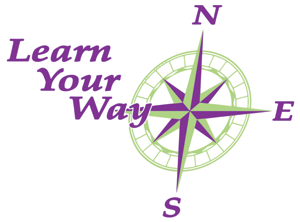Davis Theory – The Whole Story
Interventions and remediation for dyslexia are based on what someone thinks is the ’cause’ of dyslexia. For example:
Some believe it is a neuro-developmental problem, in need of specific, targeted exercises intended to put in place missing or bring up poorly developed neuro-developmental skills.
Others feel it is a problem caused by a perceptual processing disorder that affects the brain’s ability to process visual information, and is therefore helped by colored overlays or special glasses that enable the information to be processed more easily and accurately.
Some believe that it is a problem of the left side of the brain and the right side of the brain not ‘talking’ to one another efficiently enough, and exercises are prescribed that are intended to make more connections between the two hemispheres, therefore enabling better communication.
Still others feel that an essential fatty acid deficiency complicates the problem and that nutritional supplementation is imperative.
Yet another intervention states that all dyslexic problems can be fixed with a complete and thorough phonics program.
The Davis model of dyslexia correction is vastly different from all of these.
Dyslexics are picture thinkers. Rather than thinking with words, they create images in their heads as they read or speak. This process is much faster than thinking with words, so dyslexics often aren’t aware that this is what they are doing.
They are typically global thinkers, and they tend to see the ‘big picture’ first. They are often quite skilled at visual spatial thinking, creative expression, and out-of-the-box problem solving, among other unique talents. Often our great inventors are dyslexics, because they see connections between unlikely objects or concepts that others miss.
When they are confused, dyslexics typically examine the object or situation from all angles, turning it over in their imaginations to make sense of it and resolve their confusion.
This is a fine method of problem solving, as long as the source of the confusion is a three dimensional object. If the confusion is caused by a two dimensional object such as a symbol – like letters, numerals, or words on a page, then this method of problem solving creates problems itself.
When a three-dimensional object is manipulated in the imagination and looked at from all angles, it still retains its recognizable shape. When a two-dimensional object such as print on a page is looked at from all angles, the symbols can change shape and move around – letters transform into different letters, words move across the page, or perhaps even disappear.
The dyslexic thinker perceives the images in their head as reality, so if they are confused about print on a page and become disoriented as they look at it from a variety of viewpoints, the image they perceive is no longer accurate. What they think they see might not be what is actually on the page. Errors follow, then frustration and heightened anxiety over the task. That leads to more errors, more frustration, and more anxiety or anger.
As a dyslexic thinker reads, they are creating pictures in their head – a movie, so to speak. When they come to a word for which they have no picture or meaning, a momentary state of confusion results. Because they resolve confusion by examining something from all angles, they begin to examine the word in that manner. Their resulting disorientation affects their accuracy and understanding from that point on.
Often they develop coping skills, which help them to deal with their frustration, but stop the learning process from going forward. Through the Davis program, the dyslexic thinker learns to turn off the disorientation when it happens. We then find and resolve the sources of the confusion that triggered the disorientation. We equip them with tools to use their way of thinking to their advantage and they can then become enthusiastic and joyful readers.
For a complete explanation of the Davis principles, see the books, The Gift of Dyslexia or The Gift of Learning by Ron Davis. Be sure to investigate the Davis website at www.dyslexia.com.
